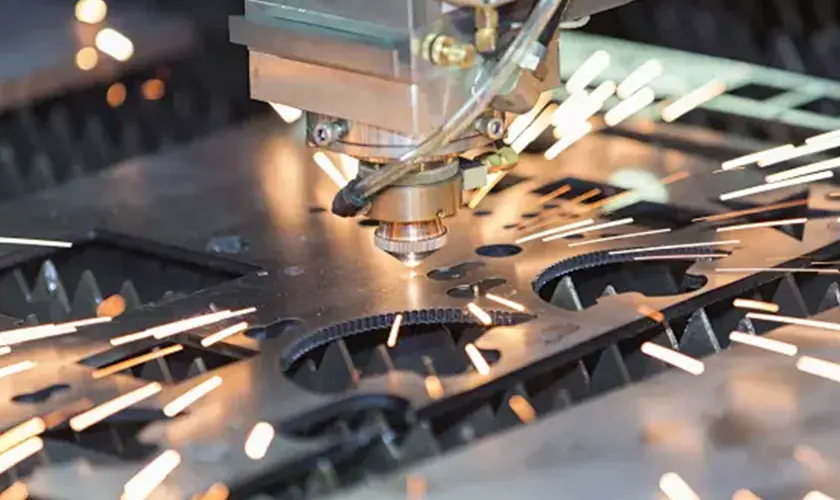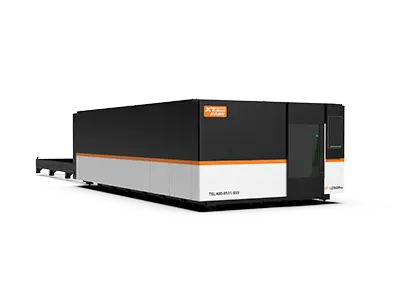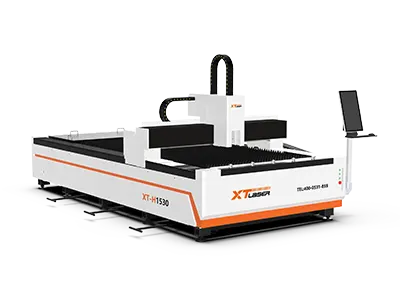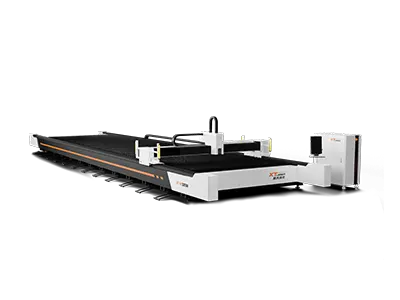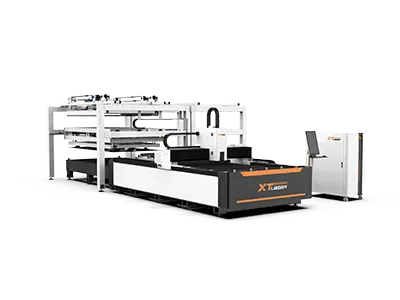Once upon a time, the metal processing industry was the exclusive domain of skilled craftsmen and large factories. If a company wanted to cut, engrave, or mark metal, it not only required expensive and bulky equipment but also extremely high demands on workers' professional skills and experience. However, the emergence of laser cutting machines on the market has completely changed this situation.
As a versatile, precise, and relatively easy-to-use tool, laser cutting machines have quickly gained the favor of many DIY enthusiasts, craftsmen, and businesses. Whether you want to cut metal in batches or create complex metal patterns and personalized metal products, laser cutting machines can do it perfectly. The emergence and use of laser cutting machines have brought unprecedented convenience to the metal processing industry.
However, for beginners, a Google search for “laser metal sheet cutting machine” will yield various types of laser cutters and suppliers. Faced with the dazzling array of laser cutting machines on the market, you may wonder: how to choose the right machine model for yourself? How to use a laser cutting machine? Is laser cutting safe? Is a laser cutting machine easy to maintain?…
In view of this, this article aims to provide a comprehensive and practical guide to laser cutting machines for beginners. We will introduce you to the basics of laser cutting machines and provide a detailed machine purchase guide. In addition, we will also introduce the safety precautions and maintenance methods of laser cutting machines based on the machine itself. Whether you are a beginner in laser cutting machines or a hobbyist interested in metal processing, this article will provide you with valuable guidance and help.
What Is a Laser Cutting Machine?
A laser cutting machine is a device that uses laser technology to cut and process materials. It melts or vaporizes materials through a focused high-energy laser beam, thereby achieving precise cutting of various materials.How laser cutting works
Laser cutting is the process of emitting a laser from a laser generator, focusing it into a high-power density laser beam through an optical path system. After the laser beam reaches the surface of the workpiece, it melts or boils the workpiece through a high temperature to form holes, and at the same time, the high-pressure gas coaxial with the beam blows away the melted or gasified metal. As the beam moves on the material, and with the assistance of auxiliary gas to blow away the slag, the holes are continuously formed into a very narrow slit (the slit is generally between 0.1-0.3mm), to realize the cutting of the material.Types of laser cutting machines
According to different classification standards, laser cutting machines can be divided into different types. The more common classification method on the market is to subdivide according to different lasers, namely fiber laser cutting machine, CO2 laser cutting machine, and YAG laser cutting machine.| Laser Cutting Machine Type | Processing Materials | Advantages | Disadvantages |
|---|---|---|---|
| Fiber laser cutting machine | Metal | Less waste, fast cutting speed, non-contact processing without consumables | Only suitable for processing metal, high purchase cost |
| CO2 laser cutting machine | Metal and non-metal | Good cutting quality, cutting of non-metallic materials up to 60mm | Slow cutting speed, high maintenance cost, high power consumption, short service life |
| YAG laser cutting machine | High reflective material | Can cut non-ferrous metals, low purchase cost | Slow cutting speed, not suitable for thick plate cutting, high maintenance cost, high power consumption, short service life |
Comparison of laser cutting and traditional cutting methods
Perhaps you have been using traditional cutting methods to process metal, and now you want to learn about the new laser cutting technology. In this section, you will learn more about the differences between laser cutting and traditional cutting methods.-
Flame cutting
-
Plasma cutting
-
Water jet cutting
-
Wire cutting
-
Laser cutting
Application fields of metal sheet laser cutting machine
The application of laser cutting has long gone beyond the traditional metal processing field and penetrated all aspects of our lives. Automobile manufacturing: Due to the characteristics of fast cutting speed and high precision of laser cutting machine, it is favored by the automobile manufacturing industry and is widely used in processing automobile bodies, automobile door frames, automobile roof covers, etc. Compared with traditional metal cutting methods, laser cutting can meet the needs of the automotive manufacturing industry for high precision and low cost. Medical equipment: Laser cutting machines are widely used in the manufacture of medical equipment and devices. The medical field has extremely high requirements for the surface smoothness of the equipment. The laser cutting machine can produce a metal surface with high smoothness, reduce the polishing process and material loss of the device, and improve production efficiency while reducing material waste. Aerospace: Laser cutting machines can meet the stringent manufacturing requirements of the aerospace industry. Laser cutting machines can be used to produce wing fasteners, fuselage wings, turbines, etc., making the processing process fast, accurate, and cost-effective. Sheet metal processing: Some metal processing plants that need to cut and produce, have higher requirements for speed. High-speed laser cutting machines can meet their needs for metal processing. In addition, the expandable options of laser cutting machines can meet the customized needs of sheet metal processing plants. Fiber laser cutting machine factories can be customized according to your processing format, metal material thickness, and loading and unloading needs to meet your cutting needs.A Guide to Buying Laser Sheet Metal Cutting Machines for Beginners
Identify your needs
Buying a CNC laser cutting machine is like buying a car. Before buying, you need to clarify your purchase needs, that is, why do you want to buy it? What kind of effect and needs do you want to achieve after buying it? In terms of laser cutting machines, you need to clarify what material you want to cut with this machine, the thickness, the processing size, the precision requirements, and your budget.
Introduction to the key parameters of laser sheet metal cutting machines
In addition to clarifying the purchase needs, it is also necessary to understand some key parameters of the laser cutting machine, such as:
- Laser type: The more common and widely used laser types on the market are CO2 and fiber, and the corresponding laser equipment is the CO2 laser cutting machine and fiber laser cutting machine. The comparison between these two devices has been detailed in the previous section “Types of laser cutting machines”, you can click to jump to read.
- Laser power: The CO2 laser power is generally within 200W, and the fiber laser power can now reach 60,000 watts. The thicker the processed material, the higher the laser power. Some people may blindly pursue high-power laser cutting machines, but this is not the case. The higher the laser power, the higher the price of the laser cutting machine. So it is recommended to choose the laser power that can meet your own cutting needs.
- Processing size: To meet the needs of customers’ different processing sizes, laser cutting machine manufacturers generally supply equipment of various sizes. Common ones are 1500×3000mm, 2000×4000mm, and 2000×6000mm laser cutting machines. In addition, some factories will supply large-scale laser cutting machines, such as 3200×13000mm. You can choose the appropriate machine processing format according to your metal sheet size.
- Cutting accuracy: The cutting accuracy of high-precision laser cutting machines is generally ±0.03mm, and the cutting accuracy of CO2 laser cutting machines is generally ±0.05mm.
- Expandable options: To meet the diverse needs of customers, some companies will provide many expandable options, such as auto-feeding laser cutting machines can realize automatic feeding, saving unloading labor and time costs; laser cutting machines with dual tables are equipped with two worktables, which can realize processing on one workbench, loading or unloading on one workbench, and improving work efficiency.
Buy a laser cutting machine
Before buying a laser cutting machine, you can ask your friends who have bought it for advice. In addition, consult as many laser cutting machine suppliers as possible to compare different machine configurations and prices, which will help you buy a machine with high-cost performance. It should be noted that buying a machine is never an easy task, it requires you to do a lot of research and comparison before choosing the right equipment.
Laser cutting machine model recommendation
At this point, many customers may still not know what to choose. I have compiled some cost-effective and entry-level hot-selling laser cutting machines for your reference.
GP series high-power laser cutting machine
- Power: 6000W-40000W
- Processing Size: 1500×3000/2000×4000/2000×6000/2500×5000/2500×8000mm
- Features: High configuration, strong cutting ability, the first choice for high-power cutting
H series fiber laser cutter for metal
- Power: 1500W-6000W
- Processing Size: 1500×3000/1500×4500/2000×4000/2000×6000/2500×6000mm
- Features: Simple operation, simple maintenance, stable performance, high-cost performance
W series large format laser cutting machine
- Power: 4000W-40000W
- Processing Size: 3200×13000/3200×14000mm
- Features: Laser cutting machine large size, intelligent control, super fast processing speed
EA series automatic loading and unloading laser cutting machine
- Power: 1500W-6000W
- Processing size: 1500×3000/1500×4500/2000×4000/2000×6000/2500×6000mm
- Features: Optimized upgrade, integrated processing, safe loading and unloading
Operation Skills of Laser Cutting Machine
Safety first Before operating the laser cutting machine, make sure you understand and master the relevant safety operating procedures. Wear personal protective equipment, such as goggles, gloves, etc., ensure that the operating environment is well-ventilated, and ensure that the machine is operating normally to reduce potential risks.
Familiar with the control panel The laser cutting machine is usually equipped with a visual control panel. Familiarity with the functions of various buttons and control switches can help you operate the machine more accurately.
Choose the right cutting parameters Learn to choose appropriate cutting parameters reasonably according to the material to be cut and the required cutting effect. This includes laser power, cutting speed, frequency, etc. Reasonable parameters can improve cutting quality and prolong machine life.
- Power setting: Set the appropriate laser power according to the type and thickness of the cutting material. Inappropriate power may result in incomplete cutting (too low power) or burning of the material (too high power).
- Speed setting: Do not pursue a very fast cutting speed, but adjust it according to the type and thickness of the material. Too slow speed may cause the cutting edge to overheat and deform, and too fast speed may affect the cutting quality.
- Focus setting: The focus position directly affects the cutting quality and needs to be adjusted precisely according to the material thickness and cutting requirements.
- In addition, if you purchase an XT laser cutting machine, you will get a free and detailed machine operation manual and video tutorial, you can learn how to operate a CNC laser cutting machine in a short time.
- Ensure the workpiece is fixed: Before cutting, make sure that the material to be cut is firmly fixed on the table. You can use clamps, suction cups, or other fixing devices to ensure the accuracy and safety of thin metal sheet cutting.
- Avoid laser damage: The laser cutting machine cuts through the laser beam emitted by the laser, so the operator should pay attention to the position of the laser beam to ensure that it is not directly exposed to the laser beam to avoid laser damage to the human body.
- Regular maintenance: Regular maintenance of the laser cutting machine is very important. Cleaning the cutting platform and lens, replacing the nozzle aligning the optical path, and lubricating the slide rails can ensure the operation effect and service life of the machine.
Maintenance of fiber laser cutting machines
As a precision equipment, the laser cutting machine requires meticulous maintenance to ensure its long-term operation and excellent performance. For novices, proper maintenance can not only extend the service life of the equipment and reduce the failure rate but also ensure consistent cutting quality. The following will introduce the daily maintenance, regular maintenance, and common troubleshooting of laser cutting machines.
Daily maintenance of laser cutting machine
Cleaning of optical components: Optical components such as mirrors and focusing lenses directly affect the quality of the beam and the cutting effect. Regularly use professional cleaning tools and solvents to gently wipe the surface of the optical components to remove dust, stains, and grease on the surface, and ensure a smooth optical path.
Check the cooling system: The cooling system plays an important role in cooling the laser and optical components. Check the coolant level regularly and refill the coolant when it is below the minimum level; in addition, check the working status of the water pump to ensure that the coolant can circulate normally.
Lubricate moving parts: The moving parts of the laser cutting machine, such as guide rails and lead screws, need to be lubricated regularly to reduce friction and wear and maintain smooth movement.
Check the pneumatic system: The pneumatic system provides auxiliary gas for laser cutting, such as oxygen and nitrogen. Regularly check the sealing of the pneumatic system to ensure normal gas supply.
Regular maintenance of laser cutting machine
In addition to the daily maintenance items mentioned above, it is also necessary to carry out professional maintenance on the laser cutting machine regularly.
Check the laser: The laser is the core component of the laser cutting machine. Regularly check its power output, beam quality, and stability to find potential problems in time. If a problem is found, ask a professional technician to calibrate and repair it in time to avoid bigger loopholes.
Replace worn parts: Some parts of the laser cutting machine, such as filter elements, sealing rings, nozzles, etc., are wearing parts and need to be replaced regularly to avoid affecting the normal use of the equipment.
Optical path calibration: To ensure the focusing accuracy of the laser beam, the optical path of the laser cutting machine needs to be calibrated regularly. Optical path calibration requires professional tools and techniques, it is recommended to ask professional technicians to operate.
For the professional maintenance and maintenance mentioned above, it is recommended that you find professional technicians to operate, so as not to damage the machine due to unprofessional operation methods and affect normal use.
Common troubleshooting
Perhaps you have carried out meticulous daily maintenance and maintenance, but the laser cutting machine still has some faults. Below I have compiled some common machine fault phenomena and troubleshooting methods, I hope to help you quickly solve the problem and make the machine quickly return to normal use.
The cutting effect is not good: Many factors cause the cutting effect to be poor. Inaccurate power settings, optical path deviation, dirty lens, laser tube power attenuation, too high water temperature, unstable voltage, etc. will affect the final cutting effect. , need to be eliminated and resolved one by one.
The laser does not output: You can check whether the power supply is properly connected and whether the emergency stop switch, water flow switch, and laser switch are normally closed or opened to determine the reason for not outputting the laser.
Abnormal operation of moving parts: Check lubrication, transmission belt tension motor drive, etc.
Software failure: Restart the software, check the software settings, update the software version, etc.
If you encounter a fault that you cannot solve by yourself, you should contact the laser cutting machine supplier or professional maintenance personnel in time and not disassemble and repair it violently to avoid further damage.
Summary
As a revolutionary technology, laser cutting machines have brought about earth-shaking changes in the field of metal processing. With its high precision, high efficiency, high flexibility, and wide range of applications, it has attracted more and more beginners and brought new cutting ideas to many companies that use traditional cutting processes.
Through the introduction of this article, we have an in-depth understanding of the working principle of laser cutting machines, the comparison of different types of cutting machines, and the precautions in the operation and maintenance of laser cutting machines. It is inevitable for beginners of CNC laser cutting machines to encounter many problems. As long as you master the correct knowledge and methods, beginners can easily get started.
At present, laser cutting technology will surely usher in a broader development space. With the continuous advancement of technology, the performance of laser cutting machines will be further improved, and the application fields will continue to expand. As a beginner, you should seize the opportunity and actively learn laser cutting technology. I believe that through continuous learning and practice, in the near future, you will be able to use laser cutting machines proficiently like experienced professionals.
Finally, I hope this article can provide useful guidance and help for beginners in laser cutting. Let’s embark on the journey of laser cutting together and explore the infinite possibilities of metal processing!
